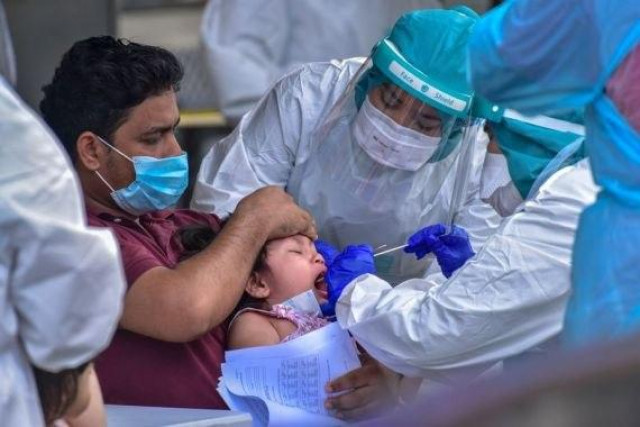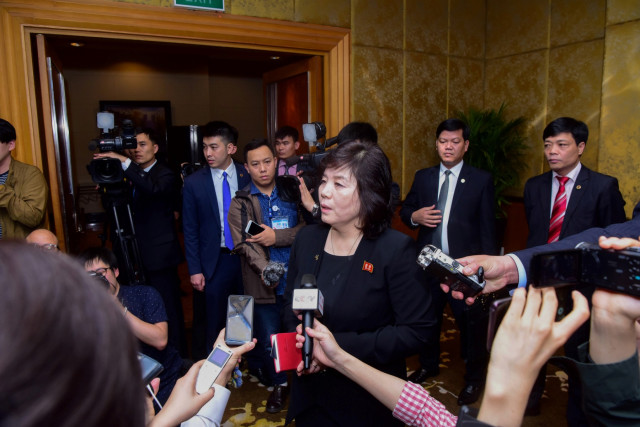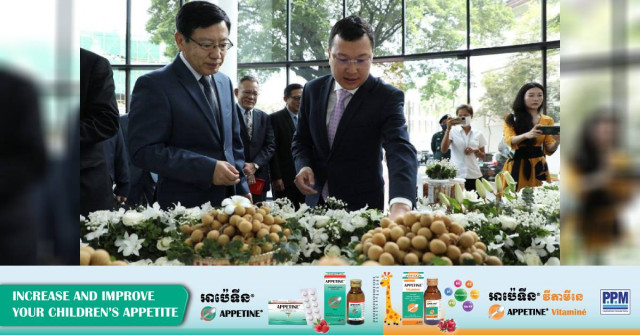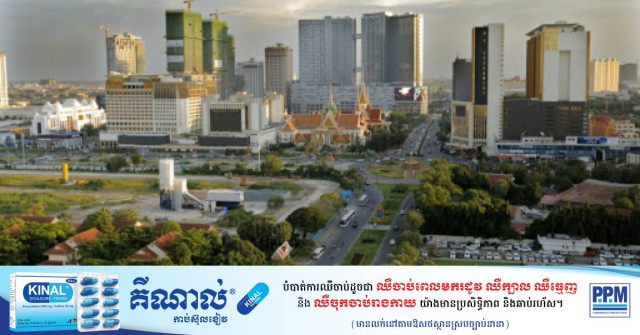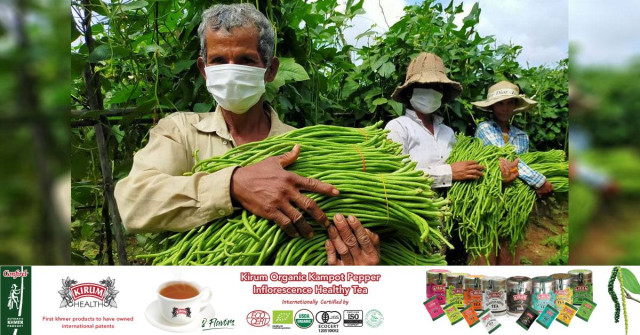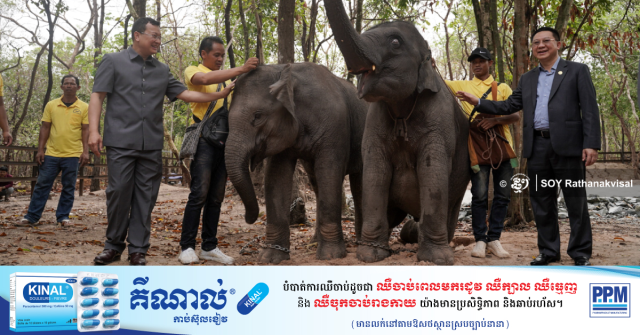Leather Craftsman Offers Free Training to Underprivileged Children in Siem Reap
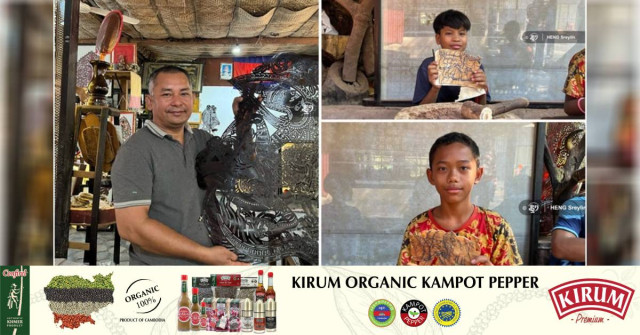
- By Heng Sreylin
- April 29, 2024 11:55 AM
SIEM REAP – A group of over 30 young people is learning to work with leather in a workshop in Siem Reap’s Prasat Bakong district, in a move to gain expertise and perpetuate traditions.
Nhek Sereyrathna, the leather workshop’s owner, is using the income he makes from the sale of the leather souvenirs to invest in the training of his young apprentices.
One of his students, Khorb Khi Hao, has been learning to carve cowhide for four years. The 12-year-old can now carve small and large pieces of leather, and is keen to contribute to the preservation of Khmer culture, which has handled leather for centuries.
“I want to learn how to carve cowhides because I can help preserve Khmer culture. Besides learning, I also received good advice from the teacher,” he said.
 Khorb Khi Hao has been learning to carve cowhide for four years. Photo: Heng Sreylin
Khorb Khi Hao has been learning to carve cowhide for four years. Photo: Heng Sreylin
Beyond learning technical skills, Khi Hao also receives support from his teacher through accommodation, meals, and financial assistance for school expenses.
“More than just learning, the teacher let me stay with him. Sometimes the teacher gives me money to go to school,” said Khi Hao
Recalling his early difficulties with sculpture, Khi Hao said his hands hurt when he first started. Nor did he understand much about each type of art.
Despite these difficulties, Khi Hao's determination remains unshaken, and he intends to continue living with his teacher until he finishes high school, while mastering the art of leather carving.
Khi Hao said that having this skill can contribute to his family’s income.
He can now carve various forms and objects, such as elephants, cows, or fruits. It takes him approximately six hours to complete a piece.
 For Loeng Tola, this workshop feels like a second home. Photo: Heng Sreylin
For Loeng Tola, this workshop feels like a second home. Photo: Heng Sreylin
Loeng Tola, a 13-year-old resident of Prasat Bakong, has been learning to carve cowhide for the past three months. He decided to embark on this adventure after his mother introduced him to it, and he quickly developed a love for leather carving.
While in grade 6 in a nearby public school, Tola chose to pursue his training at the leather workshop as he developed a passion for it. He is determined not to miss a single class.
In addition to providing accommodation and meals, Sereyrathna gives Tola 4,000 riels every day to support his studies at school.
“At the beginning, I struggled with leather carving, and my hands often hurt. I even stayed in the leather carving workshop to practice,” Tola said.
“Thankfully, senior students helped me when I faced difficulties. Although our teacher is not very strict, he does scold us when we make mistakes.”
For Tola, this workshop feels like a second home. With the guidance of his teacher and the support of his fellow students, the young boy feels encouraged to continue honing his skills until he completes high school. While he hasn't set specific life goals yet, Tola remains committed to preserving the art of cowhide carving.
 This photo shows leather-carving elephant at the workshop. Photo: Heng Sreylin
This photo shows leather-carving elephant at the workshop. Photo: Heng Sreylin
Sales are up 60 percent year-on-year
Sereyrathna said that his and the children’s leather works have gained significant support and interest from national and international tourists, particularly those visiting Bakong Temple, in Angkor’s archeological park.
The selling price of leather products differs by $1 between Cambodian and foreign customers, in a move to promote Khmer handicrafts among the locals.
“Selling to Cambodians aims to encourage them to promote and showcase Cambodian works before reaching an international people,” Sereyrathna said.
While his business depends heavily on the influx of tourists, he notes that international visitors are more numerous from September to April, and that Khmer visitors are more numerous in April and May. This year, his sales are up 60 percent compared to 2023, thanks to a rebound in tourism following the end of the COVID-19 pandemic.
 Nhek Sereyrathna, the leather workshop’s owner, is using the income he makes from the sale of the leather souvenirs to invest in the training of his young apprentices. Photo: Heng Sreylin
Nhek Sereyrathna, the leather workshop’s owner, is using the income he makes from the sale of the leather souvenirs to invest in the training of his young apprentices. Photo: Heng Sreylin
Nowadays, SereyRathna accepts more students for teaching, but those who have been trained and skilled in carving have left to pursue their new futures.
“It's not just about imparting knowledge and skills, but also about providing income from the sale of art objects, accommodation, and daily meals to these children and youth,” he said.
As his workshop offers young orphan craftsmen the opportunity to learn and grow, he determines the number of students according to the amount of income.
“There are 33 students who stay and learn to work with leather. I determined the number of students according to income level. If there are more customers and incomes increase, I will continue to accept more students,” explains Sereyrathna.
 There are 33 students who stay and learn to work with leather. Photo: Heng Sreylin
There are 33 students who stay and learn to work with leather. Photo: Heng Sreylin
 Khorb Khi Hao (L) and Loeng Tola (R) are seen carving leather at the workshop. Photo: Heng Sreylin
Khorb Khi Hao (L) and Loeng Tola (R) are seen carving leather at the workshop. Photo: Heng Sreylin
Originally written in Khmer for ThmeyThmey, this story was translated by Chhuon Kongieng for Cambodianess








